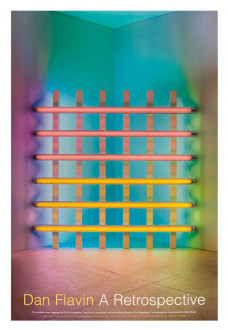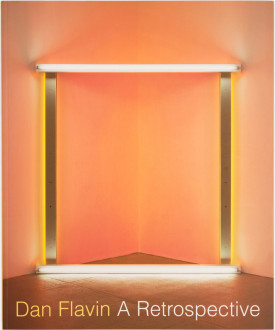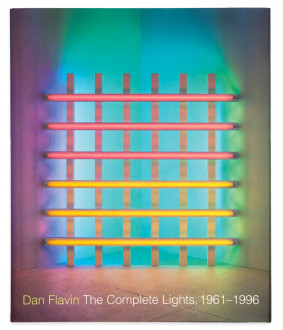Dan Flavin
Long-term view, Dia Beacon
Overview
Few artists are more identified with a particular medium than Dan Flavin. After 1963 Flavin’s work was composed almost entirely of light, in the form of commercially available fluorescent tubes in ten colors (blue, green, pink, red, yellow, ultraviolet, and four whites) and five shapes (one circular and four straight fixtures of different lengths). Initially arranging these fixtures in varying autonomous configurations, Flavin increasingly made work in relation to architecture, such as his monumental barriers that physically block a passageway or segment of a space with light.
Dan Flavin frequently referenced political subjects in his work. This is evident in monument 4 for those who have been killed in ambush (to P. K. who reminded me about death) (1966). The sculpture consists of four red fluorescent lights of equal size crossing midair, and it evocatively suggests the violence of the Vietnam War. Conceived for the landmark exhibition Primary Structures at the Jewish Museum in 1966, the work was subsequently and temporarily installed at Max’s Kansas City, a beloved bar and gathering place in lower Manhattan for many of the artists in Dia’s collection. On view here is a second edition, fabricated by Flavin for his 1969 retrospective at the National Gallery of Canada, Ottawa. In 1972 the artist contributed to an exhibition in support of George McGovern, the Democratic Party presidential nominee and an opponent of the Vietnam War. Later that year Flavin exhibited a large body of sculptures dedicated to the politician, including untitled (to a man, George McGovern) 2 (1972).
Flavin used titles to dedicate individual works to public figures and personal friends throughout his career. However, far from sentimental, such titular references often demonstrated his satirical humor. For example, untitled (to the real Dan Hill) 1b (1978) conflates two artists by the name of Dan Hill, one of which was Flavin’s friend. The work consists of four lights bound together in a colorful embrace.
Like many of his peers in the early sixties Flavin turned to readymade industrial materials as an antidote to the dominance of gestural painting. For his works in light, he never altered the dimensions nor the colors of standard-issue fluorescent bulbs. Both untitled (to the real Dan Hill) and the earlier gold, pink and red, red (1964) are therefore partial inventories of the colors and sizes of fluorescent lights that were commercially available at the time.
Flavin’s gold, pink and red, red was originally exhibited in 1964 as part of the artist’s first show of fluorescent lights. Presented at the Green Gallery, a New York venue for advanced practices in the early sixties, the exhibition summarized Flavin’s interest in prefabricated materials and rational forms that together test the boundaries of painting and sculpture. His first experiments with electric light involved attaching bulbs to the sides of small monochromatic canvases. He ironically called these objects “icons,” because they evoked the luminescence of religious icons. Through light, Flavin was able to engage the optical nature of painting while radically extending beyond its material limits. The lights at once emit a dematerializing glow and bluntly expose their device as banal fixtures bound to obsolescence. The ambivalent “image-objects,” as the artist referred to them, suggest that space itself can be a sculptural medium while presenting substantial installations of industrial hardware.
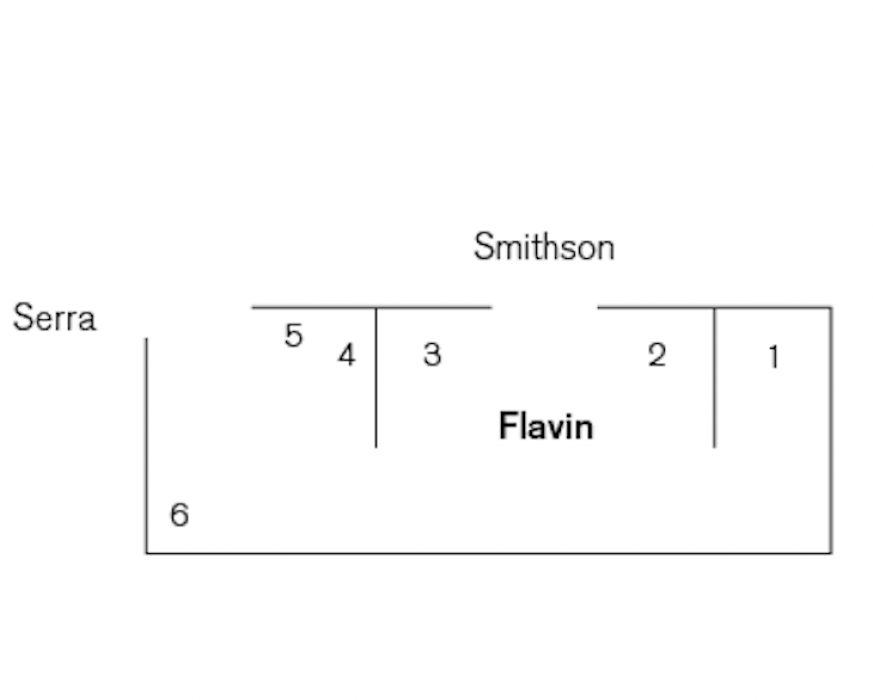
- monument 4 for those who have been killed in ambush (to P. K. who reminded me about death), 1966
Fluorescent light and metal fixtures; edition 2/3
Dia Art Foundation
- untitled (to a man, George McGovern) 2, 1972
Fluorescent light and metal fixtures; edition 2/3
Dia Art Foundation
- untitled (to the real Dan Hill) 1b, 1978
Fluorescent light and metal fixtures; edition 1/5
Dia Art Foundation
- untitled, 1969
Fluorescent light and metal fixtures; edition 3/3
Dia Art Foundation; Gift of Louise and Leonard Riggio
- untitled, 1969
Fluorescent light and metal fixtures; edition 3/3
Dia Art Foundation; Gift of Louise and Leonard Riggio
- gold, pink and red, red, 1964
Fluorescent light and metal fixtures; edition 2/3
Dia Art Foundation
Dan Flavin was born in 1933 in New York City. In the mid-1950s he served in the United States Air Force, after which he returned to New York, where he studied art history at the New School for Social Research and Columbia University. In 1961 he had his first solo exhibition at the Judson Gallery, New York. Later that year he began experimenting with electric light in a series of works called “icons,” which led him to his first work made solely of fluorescent light, the diagonal of May 25, 1963 (to Constantin Brancusi) (1963). Major exhibitions of Flavin’s work include those at the Museum of Contemporary Art, Chicago (1967); the National Gallery of Canada, Ottawa (1969); and the Staatliche Kunsthalle, Baden-Baden, Germany (1989). In 2004 Dia organized a traveling retrospective in association with the National Gallery of Art, Washington, DC. In 1983 Dia opened the Dan Flavin Art Institute (now Dia Bridgehampton), a permanent exhibition designed by the artist in a former firehouse and Baptist church in Bridgehampton, New York. Flavin died in 1996 in Riverhead, New York
Artist
Dan Flavin
Selected Works on View
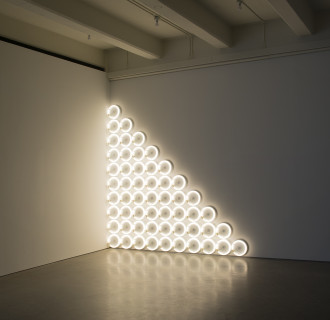
Dan Flavin
untitled (to a man, George McGovern) 2, 1972
Go to untitled (to a man, George McGovern) 2 page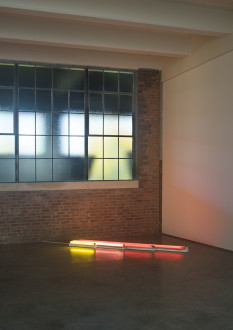
Dan Flavin
gold, pink and red, red, 1964
Go to gold, pink and red, red page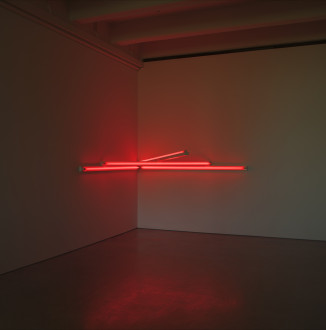
Dan Flavin
monument 4 for those who have been killed in ambush (to P.K. who reminded me about death), 1966
Go to monument 4 for those who have been killed in ambush (to P.K. who reminded me about death) page
Dan Flavin
untitled (to the real Dan Hill) 1b, 1978
Go to untitled (to the real Dan Hill) 1b page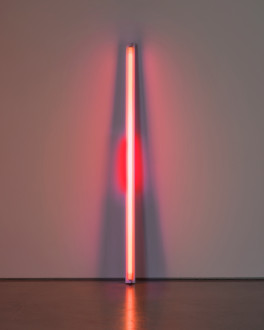
Dan Flavin
untitled, 1969
Go to untitled page
Dan Flavin
untitled, 1969
Go to untitled pageBooks
Dan Flavin: A Retrospective Poster
Full-color offset poster Created for the 2004 exhibition Dan Flavin: A Retrospective, organized by Dia Art Foundation, New York, in association with the National Gallery of Art, Washington, D.C.
Dan Flavin: A Retrospective
Tiffany Bell and Michael Govan
This landmark book features the artist’s most significant light works, plus reproductions of Flavin's drawings.
Dan Flavin: The Complete Lights, 1961–1996
Tiffany Bell and Michael Govan
A complete study of the stunning light works by Dan Flavin.
Explore
T.J. Wilcox on Dan Flavin and the Hudson River School
Move to T.J. Wilcox on Dan Flavin and the Hudson River School pageTony Feher on Dan Flavin
Move to Tony Feher on Dan Flavin page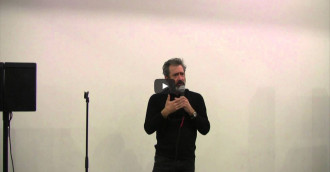
Tony Feher on Dan Flavin
Move to Tony Feher on Dan Flavin page

